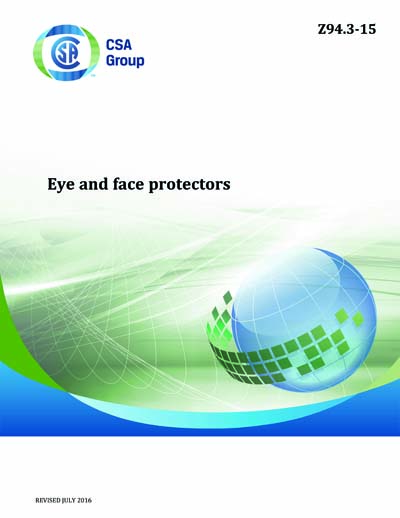Historical
CSA Z94.3-2015
Z94.3-15 - Eye and face protectors
Preface
This is the eighth edition of CSA Z94.3, Eye and face protectors. It supersedes the previous editions, published in 2007 and 2002 under the same title and in 1999, 1992, 1988, 1982, and 1969 under the title Industrial Eye and Face Protectors. Major changes to this edition include the following:Scope
1.1 This Standard applies to eye and face protectors used in all occupational and educational operations or processes involving hazards to the eyes or face. Typical hazards include flying objects and particles, splashing liquids, molten metal, and ultraviolet, visible, and infrared radiation, but do not include X-rays, gamma rays, high-energy particulate radiation, radioactive materials, or masers. Note: The guidelines for protection outlined in Annex A should be followed when similar potentially hazardous activities are conducted in the home, at leisure, and in recreational environments. For certain sports activities, other Standards should be consulted (e.g., CSA Z262.2). 1.2 This Standard sets minimum performance requirements in the tests described herein but does not cover factors of design such as comfort, service life, or appearance. Note: The conformance of protectors with these requirements does not imply equality of performance, nor should it be interpreted to mean that protectors are capable of affording greater protection than is specified in this Standard. 1.3 In this Standard, shall is used to express a requirement, i.e., a provision that the user is obliged to satisfy in order to comply with the standard; should is used to express a recommendation or that which is advised but not required; and may is used to express an option or that which is permissible within the limits of the standard. Notes accompanying clauses do not include requirements or alternative requirements; the purpose of a note accompanying a clause is to separate from the text explanatory or informative material. Notes to tables and figures are considered part of the table or figure and may be written as requirements. Annexes are designated normative (mandatory) or informative (non-mandatory) to define their application.Content Provider
CSA America, Inc. [csa]






